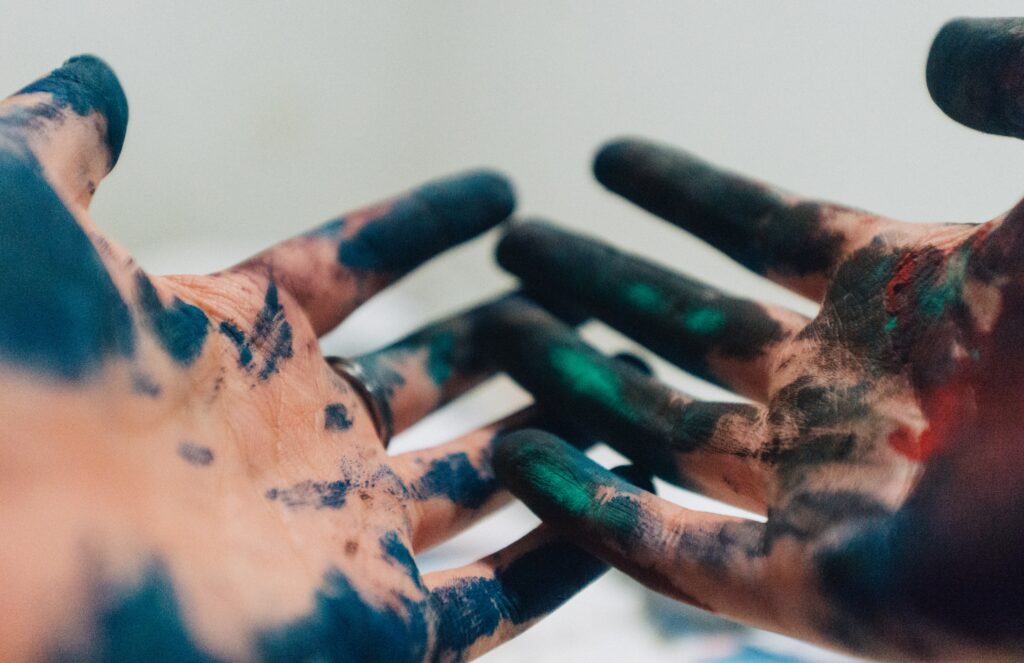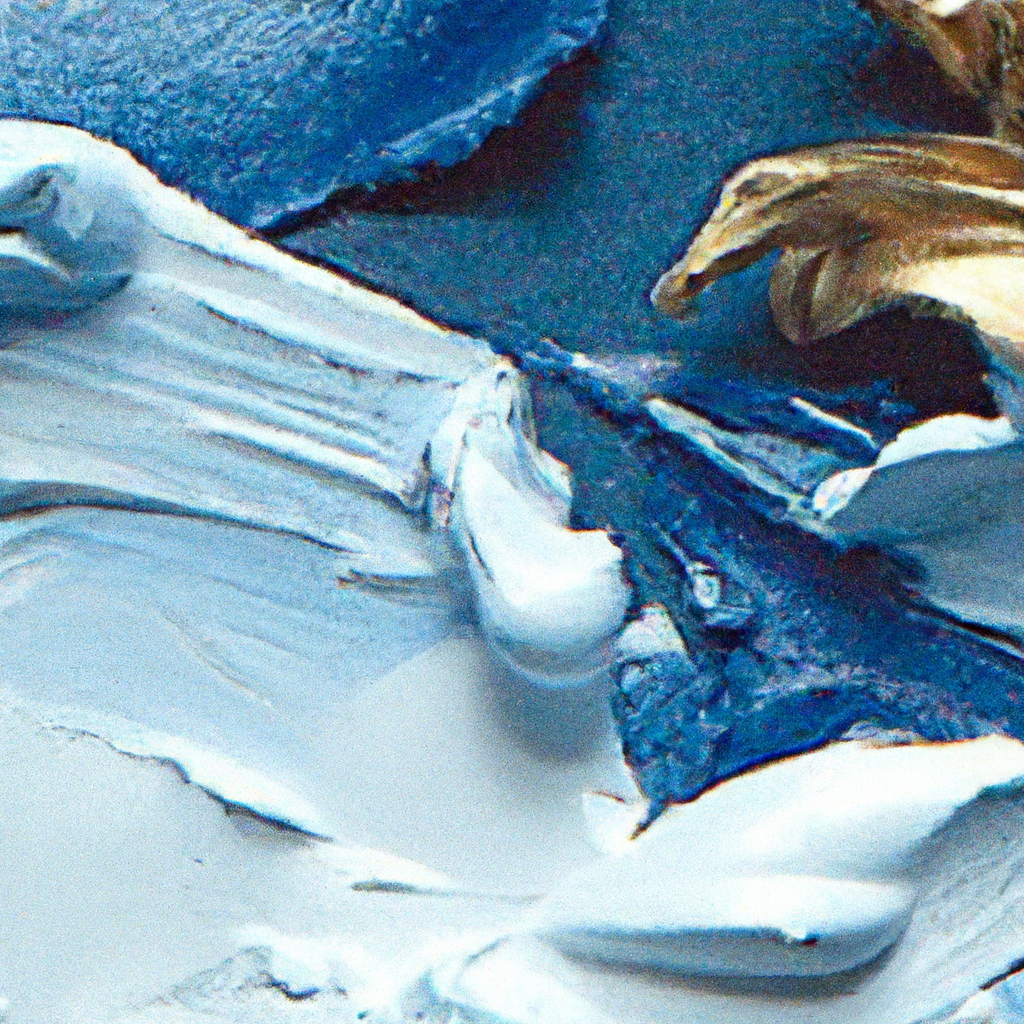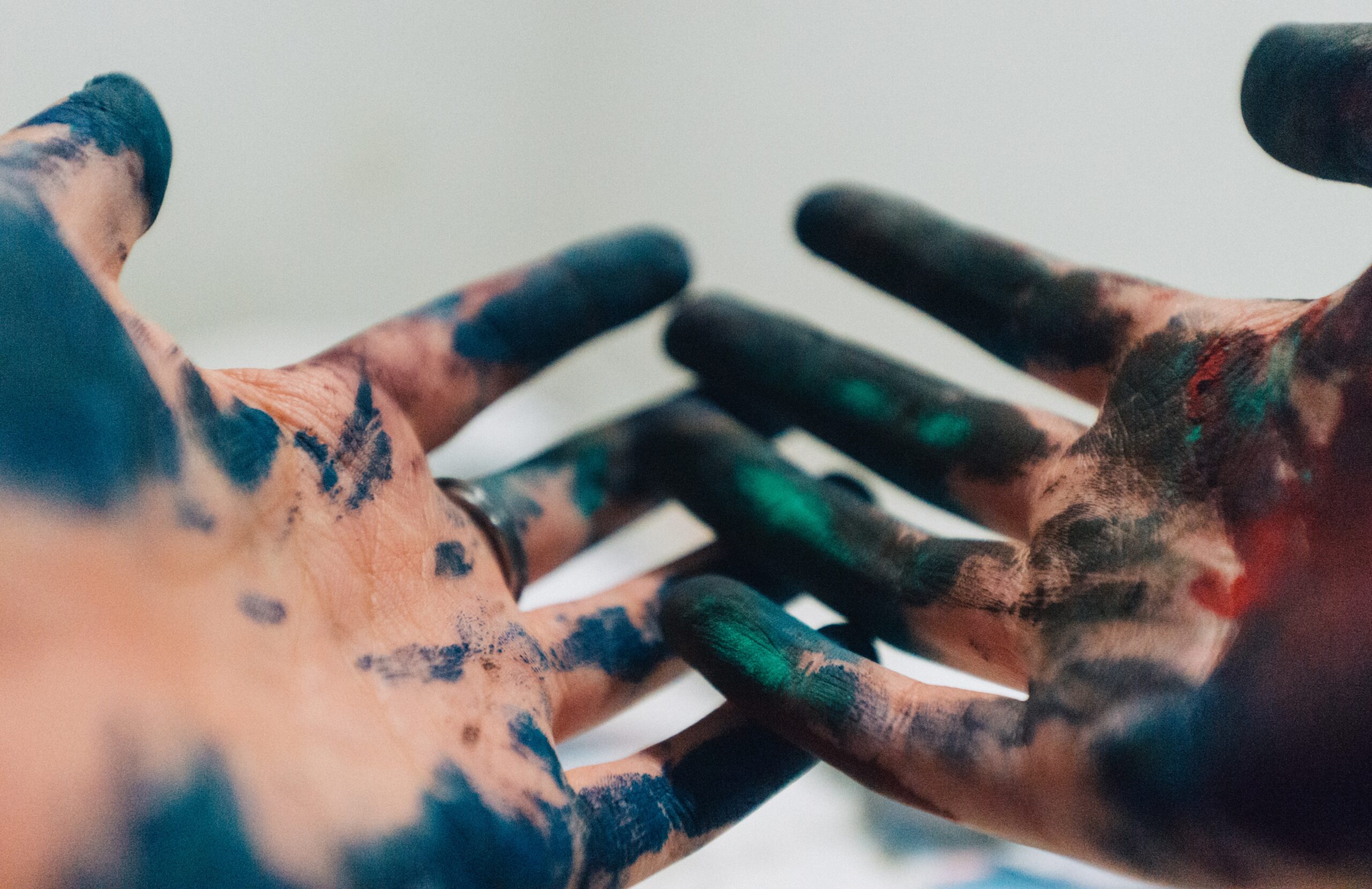In the realm of acrylic painting, achieving the perfect consistency of paint can make a world of difference in the quality of your artwork. If you find yourself in need of a thicker paint texture, look no further than the humble kitchen staple: cornstarch. This versatile ingredient not only adds body to your acrylic paint, but also allows for better control and manipulation of the paint on your canvas. By following a few simple steps, you can harness the power of cornstarch to elevate your acrylic painting experience to new heights.
Understanding Acrylic Paint
What is acrylic paint?
Acrylic paint is a fast-drying and versatile type of paint that is made from pigment suspended in acrylic polymer emulsion. It is a popular choice among artists and hobbyists due to its ability to adhere to a wide range of surfaces, including canvas, wood, paper, and even metal. Acrylic paint is known for its vibrant colors, durability, and ease of use.
Properties of acrylic paint
Acrylic paint has a unique set of properties that make it a preferred choice for many artists. It has a thick consistency, allowing for easy blending and layering of colors. It dries quickly, which is especially beneficial for those who prefer to work with shorter drying times. Acrylic paint is also known for its strong adhesive properties, ensuring that the artwork remains intact for years to come. Additionally, acrylic paint is water-soluble, making it easy to clean up with water before it dries.
Why would you want to thicken acrylic paint?
While acrylic paint is versatile and easy to work with, there may be instances where you would want to thicken the paint. Thicker acrylic paint allows for more control over the application, particularly when using techniques that require texture or heavy layering. It can also be beneficial when working on surfaces that require a thicker paint to achieve the desired effect. By thickening acrylic paint, you can create a more three-dimensional look and enhance the texture of your artwork.
Introduction to Cornstarch
What is cornstarch?
Cornstarch, also known as cornflour, is a fine white powder that is derived from the endosperm of corn kernels. It is commonly used in cooking and baking as a thickening agent for sauces, soups, and desserts. Cornstarch is composed mainly of carbohydrates and has a neutral taste and odor, making it a versatile ingredient in various culinary applications.
Properties of cornstarch
Cornstarch has several properties that make it suitable for thickening acrylic paint. It has a high viscosity, allowing it to effectively bind with the paint and increase its thickness. Cornstarch also has a smooth texture, which helps in maintaining the paint’s consistency without altering its color or drying time significantly. Another advantage of using cornstarch is that it is inexpensive and readily available, making it a cost-effective solution for thickening acrylic paint.
Why use cornstarch to thicken acrylic paint?
Cornstarch is a popular choice for thickening acrylic paint due to its accessibility and ease of use. By adding cornstarch to acrylic paint, you can achieve a thicker consistency without compromising the paint’s color or drying time. This can be particularly useful when working on textured surfaces or when using techniques that require a heavier application of paint. Furthermore, cornstarch is non-toxic and non-reactive, making it a safe and reliable option for artists of all levels.

This image is property of images.unsplash.com.
Preparing the Acrylic Paint
Selecting the acrylic paint
Before you begin the process of thickening acrylic paint, it is important to select the right type of paint for your project. Acrylic paint comes in various brands, colors, and finishes, so choose one that suits your artistic vision. Consider factors such as the desired vibrancy of the color, the opacity, and the quality of the paint. It is advisable to choose a professional-grade acrylic paint as they often have better pigment concentration and adhesion properties.
Gathering necessary materials
To thicken acrylic paint using cornstarch, you will need a few materials. These include:
- Acrylic paint: Select the desired colors and finishes based on your artistic vision.
- Cornstarch: Ensure you have enough cornstarch to achieve the desired thickness. A general rule of thumb is to use one part cornstarch for every three parts paint.
- Measuring tools: Use measuring spoons or a kitchen scale to accurately measure the cornstarch and paint.
- Mixing container: Choose a container that is large enough to accommodate the paint and cornstarch mixture. A plastic or glass container with a tight-fitting lid is ideal for easy storage and future use.
- Stirring utensil: Use a wooden stick or a palette knife to mix the paint and cornstarch thoroughly.
Mixing the paint properly
To properly prepare the paint for thickening, follow these steps:
- Start by pouring the desired amount of paint into the mixing container. Consider the amount of paint you will need for your project to prevent wastage.
- Gradually add the cornstarch to the paint, starting with a small amount and gradually increasing as needed. Keep stirring the mixture as you add the cornstarch to distribute it evenly.
- Continue stirring the mixture until the cornstarch is completely incorporated into the paint. Make sure there are no lumps or clumps of cornstarch remaining.
- Once the paint and cornstarch are thoroughly mixed, allow the mixture to sit for a few minutes to ensure optimal consistency and to allow the cornstarch to fully activate.
- After the resting period, stir the mixture once again to ensure a smooth and consistent texture. Your thickened acrylic paint is now ready to use.
Blending Cornstarch with Acrylic Paint
Determining the desired thickness
Before blending cornstarch with acrylic paint, it is essential to determine the desired thickness. Consider the specific technique or effect you wish to achieve in your artwork. A thicker paint is suitable for impasto techniques and creating texture, while a thinner consistency may be preferable for glazing or washes. Having a clear understanding of the desired thickness will guide the amount of cornstarch you add to the paint.
Preparing cornstarch mixture
To create a cornstarch mixture for thickening acrylic paint, follow these steps:
- In a separate container, measure the desired amount of cornstarch based on the desired thickness. Use one part cornstarch for every three parts of paint as a general guideline.
- Add a small amount of water to the cornstarch and stir until it forms a smooth paste. The consistency of the cornstarch paste should be thick but pourable.
- Gradually add water to the cornstarch paste while stirring continuously until it reaches the desired consistency. Be cautious not to add too much water, as it can thin out the paint excessively.
- Allow the cornstarch mixture to rest for a few minutes to ensure optimal viscosity and activation of the cornstarch particles.
Adding cornstarch to acrylic paint
Once the cornstarch mixture is ready, follow these steps to add it to the acrylic paint:
- Pour the desired amount of acrylic paint into a clean mixing container.
- Slowly pour the prepared cornstarch mixture into the acrylic paint while stirring continuously.
- Continue stirring until the cornstarch mixture is fully incorporated into the paint. Pay attention to any lumps or clumps and ensure they are thoroughly mixed to maintain a smooth consistency.
- Allow the mixture to sit for a few minutes to stabilize before testing the consistency. This will help ensure that the cornstarch has fully interacted with the paint and achieved the desired thickness.

This image is property of images.unsplash.com.
Mixing Techniques
Stirring method
The stirring method is one of the most straightforward techniques for mixing thickened acrylic paint. To use this method, follow these steps:
- After adding the cornstarch mixture to the acrylic paint, use a stirring utensil to mix the paint in a circular motion.
- Ensure that you reach the bottom and sides of the container to incorporate any settled paint or cornstarch.
- Continue stirring until the thickened paint appears smooth and consistent.
- Use a scraping motion along the sides of the container to remove any excess paint and ensure an even mixture.
Whisking method
The whisking method is an effective technique for blending thickened acrylic paint quickly. To use this method, follow these steps:
- After adding the cornstarch mixture to the acrylic paint, insert a whisk into the mixture.
- Move the whisk in a circular motion, ensuring that it reaches all areas of the container.
- Whisk the paint vigorously to break up any lumps or clumps and achieve a smooth texture.
- Use a scraping motion along the sides of the container to remove any excess paint and ensure an even mixture.
Shaking method
The shaking method is suitable for blending smaller batches of thickened acrylic paint. To use this method, follow these steps:
- Pour the acrylic paint and cornstarch mixture into a sealable container, such as a jar or bottle.
- Ensure that the container is tightly sealed to prevent any leakage.
- Shake the sealed container vigorously for a few minutes. This will help distribute the cornstarch throughout the paint and achieve an even consistency.
- Open the container and check the paint’s consistency. If necessary, continue shaking for a few more minutes until the desired thickness is achieved.
Testing the Consistency
What to look for in the paint’s consistency
Testing the thickness of the acrylic paint is crucial before applying it to your artwork. Consider the type of technique you will be using and the desired result. The paint’s consistency should allow for easy application and manipulation while retaining the desired texture and dimensionality. It should not be too runny or too thick, as both extremes can affect the quality of your artwork.
Conducting a patch test
To ensure that the thickened acrylic paint is at the desired consistency, conduct a patch test before applying it to the entire artwork. Follow these steps to conduct a patch test:
- Select a small section of your painting surface or a test canvas.
- Apply a thin layer of the thickened acrylic paint to the chosen area using a brush or palette knife.
- Observe the paint’s behavior and texture as it dries. Pay attention to factors such as the ease of application, the ability to hold texture, and any changes in color or transparency.
- Adjust the consistency of the paint if necessary based on your observations.
Making necessary adjustments
If the paint is too thick or too thin, it may be necessary to make adjustments to achieve the desired consistency. To thin the paint, simply add a small amount of water and mix thoroughly until the desired consistency is reached. If the paint is too thin, add more cornstarch mixture in small increments, ensuring proper mixing after each addition. Continuously test the paint’s consistency through a patch test until you achieve the optimal thickness for your artwork.

This image is property of images.unsplash.com.
Using Thicker Acrylic Paint
Applying the paint on canvas or surface
Once you have achieved the desired thickness of acrylic paint, it is time to apply it to your chosen surface. Follow these guidelines for applying thicker acrylic paint:
- Prepare the surface by ensuring it is clean, dry, and properly primed if necessary. The paint will adhere better to a properly prepared surface.
- Use a brush or palette knife to apply the thickened acrylic paint to the surface. Apply even pressure to ensure proper coverage and adherence.
- Experiment with different brushstrokes and techniques to create texture and depth. The thickened paint allows for more control and the ability to build up layers and add dimension.
- Take breaks between layers to allow the paint to dry partially or fully before adding additional layers. This can further enhance the texture and depth of the artwork.
Layering and texture techniques
Thicker acrylic paint opens up a world of possibilities for creating unique textures and layering techniques in your artwork. Some techniques to consider include:
- Impasto: Apply thick layers of paint directly onto the canvas or surface. Use a palette knife or brush to create texture and visible brushstrokes.
- Sculptural effects: Build up the paint in specific areas to create a three-dimensional effect. Use a brush or palette knife to shape the paint and add depth.
- Wet-on-wet blending: Apply wet layers of thickened paint on top of each other to create blended colors and gradients. Experiment with blending techniques and different brushstrokes to achieve desired effects.
- Collage and mixed media: Incorporate other materials, such as paper, fabric, or found objects, into the thickened paint to create texture and visual interest.
Drying and curing time
Thicker acrylic paint will generally take longer to dry and cure compared to thinner paint. Factors such as the thickness of the paint, the humidity, and the temperature of the environment can affect the drying time. It is important to allow the layers of paint to fully dry before applying additional layers or varnish. Depending on the thickness of the paint and environmental conditions, drying time can range from a few hours to several days. To ensure proper curing, allow the artwork to dry in a well-ventilated area away from direct sunlight.
Blending Colors with Thicker Paint
Mixing colors effectively
When working with thicker acrylic paint, it is crucial to mix colors effectively to achieve the desired results. Follow these tips for effective color mixing:
- Use a separate palette or mixing surface to mix colors. This will help you maintain the cleanliness of your original paint tubes and prevent cross-contamination.
- Start with a small amount of paint and gradually add more as needed. This will allow you to have better control over the color intensity and prevent wastage.
- Mix colors using a palette knife or clean brush. Avoid using the same brush for mixing different colors to maintain color purity.
- Experiment with different color combinations and ratios to achieve a wide range of hues and shades. Take note of the colors used and their ratios for future reference.
Understanding color opacity
The opacity of acrylic paint refers to its ability to block light and show the underlying layers or surface. When working with thicker acrylic paint, it is important to consider the opacity of the colors you are using. Some colors may be more opaque than others, affecting the overall appearance of your artwork. To achieve desired effects:
- Experiment with layering techniques to achieve a balance between opaque and transparent areas.
- Use thin layers of more transparent paint to allow the underlayers to show through.
- Apply thicker layers of more opaque paint to cover underlying layers or create solid shapes.
- Consider the opacity of the paint when planning your composition and desired effects.
Achieving desired effects
Thicker acrylic paint offers a variety of effects and textures that can enhance your artwork. Here are some techniques to consider:
- Creating texture: Build up layers of paint using impasto techniques to add texture and dimension to your artwork. Experiment with different tools and brushstrokes to achieve unique textures.
- Glazing: Apply thin layers of transparent or translucent paint over thicker layers to create depth and richness of color. This technique allows the underlying layers to show through, adding complexity to your artwork.
- Drybrushing: Use a dry brush with very little paint to create subtle texture and highlights on the surface. This technique works well with thickened acrylic paint as it allows for better control and precision.
- Dripping and pouring: Thin the thickened acrylic paint slightly with water, and pour or drip it onto the canvas or surface. Tilt the surface to allow the paint to flow and create organic patterns and shapes.

Cleaning Up
Cleaning brushes and tools
Proper cleaning of brushes and tools is essential to maintain their longevity and prevent cross-contamination of colors. Follow these steps for effective cleaning:
- Rinse the brushes and tools immediately after use with water. Use a gentle soap or brush cleaner if needed.
- Gently work the soap or cleaner into the bristles or tool, ensuring that all residues are removed.
- Rinse thoroughly with water until the water runs clear and no paint or soap residue remains.
- Gently squeeze excess water from the brushes and reshape them into their original form.
- Allow the brushes and tools to air dry completely before storing them.
Storing leftover paint
If you have leftover thickened acrylic paint, you can store it for future use. Follow these guidelines for proper storage:
- Transfer the leftover paint to an airtight container, such as a jar or a plastic tub with a tight-fitting lid.
- Make sure the container is clean and free of any paint residue.
- Label the container with the date and the color(s) of the paint for easy identification.
- Store the container in a cool, dry place away from direct sunlight. This will help prolong the lifespan of the paint.
- Before using the stored paint, inspect it for any signs of mold, discoloration, or off smells. If any of these are present, it is advisable to discard the paint.
Proper disposal of waste
When working with acrylic paint, it is important to dispose of any waste properly to minimize environmental impact. Here are some guidelines for proper disposal:
- Allow leftover paint or rinse water to dry completely before disposing of it in the regular trash.
- Ensure that the solidified paint or waste does not come into contact with any water sources or soil.
- Place any paper towels, rags, or other waste contaminated with acrylic paint in a sealed plastic bag before discarding it in the regular trash.
- If you have a large volume of waste paint, consider donating it to a local art organization or facility that can properly dispose of it.
Tips and Considerations
Experiment with small batches first
When first using cornstarch to thicken acrylic paint, it is advisable to experiment with small batches. This will allow you to familiarize yourself with the process and determine the optimal ratio of cornstarch to paint for your desired thickness. By starting small, you can avoid wasting large quantities of paint and make necessary adjustments along the way.
Adjusting ratios for different effects
The amount of cornstarch you add to acrylic paint will depend on the desired thickness and effect. For more texture and heavy layering, consider using a higher ratio of cornstarch to paint. Conversely, if you prefer a slightly thicker consistency without excessive texture, use a smaller ratio. Adjust the ratios according to your personal preferences and the effect you wish to achieve in your artwork.
Avoid using excessive cornstarch
While cornstarch is an effective thickening agent, using excessive amounts can alter the properties of acrylic paint. Too much cornstarch can make the paint overly thick and difficult to work with. It can also lead to an uneven distribution of pigment and affect the paint’s adhesive properties. Start with a smaller amount of cornstarch and gradually add more as needed, ensuring that the paint retains its desirable qualities.
In conclusion, understanding how to thicken acrylic paint with cornstarch can provide artists and hobbyists with greater control over their artwork. Acrylic paint, known for its versatility and vibrant colors, can be further enhanced by using cornstarch to increase its thickness. By following the proper techniques and guidelines, artists can achieve a wide range of effects, from creating texture and dimension to blending colors and achieving desired opacity. Whether experimenting with different techniques or working on specific projects, the ability to thicken acrylic paint offers endless possibilities for artistic expression.




